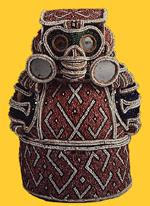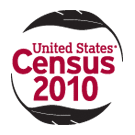Borikén/Puerto Rico (UCTP Taino News) - The 2010 U.S. Census count for Borikén (Puerto Rico) had some significant surprises. The census reveals a 48.8 percent gain over the last 2000 census in the American Indian category, which is a verifiable resurgence of indigenous affirmation among families on the island. With DNA research documenting the continuation of the pre-Colombian indigenous Taino gene-pool and the increasing visibility of active Taino community organizations and cultural manifestations – the myth of extinction is finally being dispelled.
The Director of the United Confederation of Taino People’s Borikén Liaison Office, Roger Guayakan Hernandez attributes the increase in the census count to expansion of information and communications technologies available today.
"We have always been here but recently there has been an explosion of pertinent information regarding Borikén's indigenous heritage. The difference is that now there are more ways to get the information to the people" stated Hernandez.
Hernandez noted that the Confederation, an official Census partner, used the increased focus on Taino heritage as well as new technologies like social networks in its campaign to raise awareness about the census process.
With the 2010 U.S. Census counting 19,839 individuals living in Puerto Rico officially claiming American Indian heritage, the Taino community is indeed becoming visible after two centuries of near invisibility.
Hernandez continued stating that "the whole chapter on the Caribbean's Amerindian history is being reexamined and supports the affirmation of indigenous descendant families on and even off the island”.
A 1790 Puerto Rican Census count in an area called “Las Indieras” documented fewer than 3,000 ‘Indios (Indians)’ on the western side of the island. Since then, with official census terminology changing to discount the indigenous population, a reversal has taken place revealing how Taino families see themselves in the 21st Century.
"Colonial history may have counted us out in Puerto Rico, but today the Taino People have clearly counted ourselves back in" declared Hernandez.
UCTPTN 03.28.2011
The Director of the United Confederation of Taino People’s Borikén Liaison Office, Roger Guayakan Hernandez attributes the increase in the census count to expansion of information and communications technologies available today.
"We have always been here but recently there has been an explosion of pertinent information regarding Borikén's indigenous heritage. The difference is that now there are more ways to get the information to the people" stated Hernandez.
Hernandez noted that the Confederation, an official Census partner, used the increased focus on Taino heritage as well as new technologies like social networks in its campaign to raise awareness about the census process.
With the 2010 U.S. Census counting 19,839 individuals living in Puerto Rico officially claiming American Indian heritage, the Taino community is indeed becoming visible after two centuries of near invisibility.
Hernandez continued stating that "the whole chapter on the Caribbean's Amerindian history is being reexamined and supports the affirmation of indigenous descendant families on and even off the island”.
A 1790 Puerto Rican Census count in an area called “Las Indieras” documented fewer than 3,000 ‘Indios (Indians)’ on the western side of the island. Since then, with official census terminology changing to discount the indigenous population, a reversal has taken place revealing how Taino families see themselves in the 21st Century.
"Colonial history may have counted us out in Puerto Rico, but today the Taino People have clearly counted ourselves back in" declared Hernandez.
UCTPTN 03.28.2011











